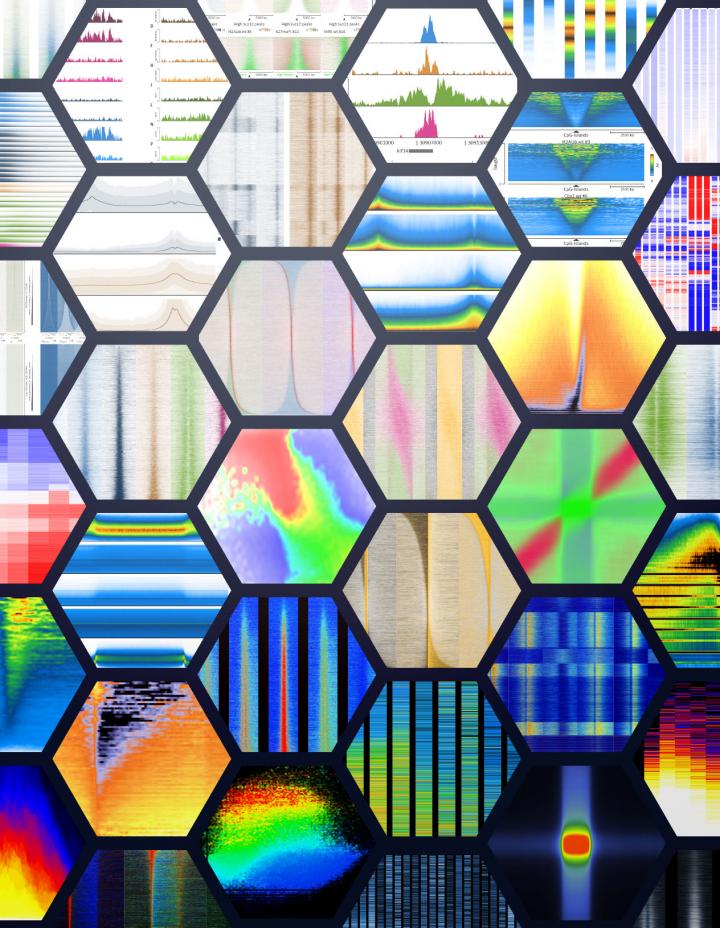New software provides and overview of the big data of genome sequencing

This is a selection of the many data visualization options provided by EaSeq. Credit: Mads Lerdrup
ChIP sequencing – an insight into the workflow of human cells
The EaSeq software has been developed for analysis of so called ChIP sequencing. DNA sequencing is used for mapping the sequence of the base pairs, which our DNA consists of, and ChIP sequencing is a derived method in which the sequences are used to determine the presence of different cell components in the genome at a given time.
Roughly speaking, ChIP sequencing can be compared to a microscope, which enables us to observe the presence of different cell components in the entire genome at a given time.
The method is still quite young and holds the potential to be applied within many more scientific fields, which can benefit from understanding how healthy and pathological cells control and uses genes, says Associate Professor Mads Lerdrup
Better analytical tools means a broader range of applications
While ChIP sequencing has made it possible to produce enormous amounts of data very fast, the analysis of these data has – until now – been a tedious process. Most of the analytical software being used requires knowledge of computer programming and researchers have therefore been dependent on specialists in order to decode and analyze their data.
EaSeq offers a far more visual and intuitive alternative, which makes it possible for biomedical researchers to study and test hypotheses using their own data. This means that instead of waiting for weeks for others to carry out an analysis, researchers will be able to perform the analyses themselves in a matter of hours.
Today, DNA sequencing is gaining ground within the clinical area where it is e.g. being used for diagnosis and targeting of treatment within the cancer area. The developers of EaSeq see similar perspectives for ChIP sequencing in the clinical work, and in that context strong analytical tools will be pivotal.
– The DNA sequence itself tells us very little about how cells actual decodes the DNA, and to understand this we need to map out which cell components are present in different parts of the genome at a specific time. It is our hope that we by increasing feasibility can enable researchers to faster uncover such knowledge and apply it clinically, says Associate professor Mads Lerdrup
Media Contact
All latest news from the category: Information Technology
Here you can find a summary of innovations in the fields of information and data processing and up-to-date developments on IT equipment and hardware.
This area covers topics such as IT services, IT architectures, IT management and telecommunications.
Newest articles

Recovering phosphorus from sewage sludge ash
Chemical and heat treatment of sewage sludge can recover phosphorus in a process that could help address the problem of diminishing supplies of phosphorus ores. Valuable supplies of phosphorus could…

Efficient, sustainable and cost-effective hybrid energy storage system for modern power grids
EU project HyFlow: Over three years of research, the consortium of the EU project HyFlow has successfully developed a highly efficient, sustainable, and cost-effective hybrid energy storage system (HESS) that…

After 25 years, researchers uncover genetic cause of rare neurological disease
Some families call it a trial of faith. Others just call it a curse. The progressive neurological disease known as spinocerebellar ataxia 4 (SCA4) is a rare condition, but its…





















